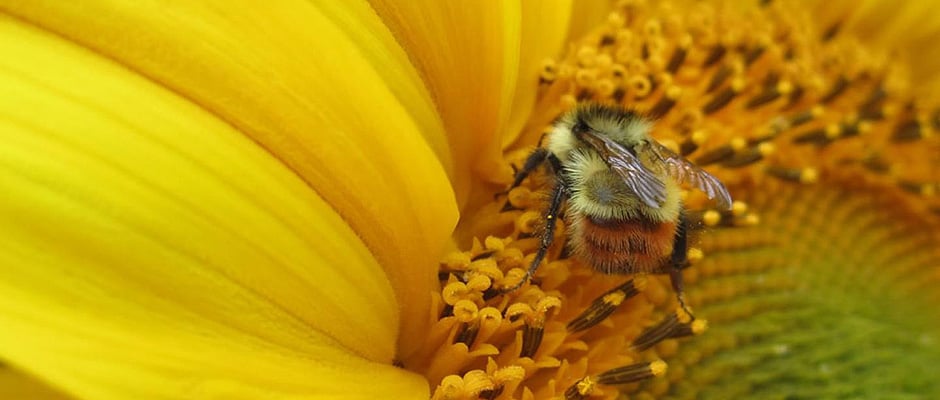Share this article
Researchers Survey Alaskan Native Bumble Bees
It had been almost 50 years since researchers last recorded data about native bumble bees in Alaska. But in a recent study, researchers from the University of Alaska Fairbanks and the U.S. Department of Agriculture reported their findings from two years of research on these pollinators that are fundamental to crops and native ecosystems.
In the study published in Biodiversity Data Journal, the research team collected wild, native bumble bees to determine species composition, distribution, seasonal biology and parasites.
“We were interested in the general knowledge of bumble bees in Alaska,” said Rehanon Pampell, the lead author of the study who completed this work as part of her master’s thesis while working as a biological technician for the USDA Agricultural Research Service. “When we did a literature search, there wasn’t a lot that came up.”
Pampell said the last published research from the early 1960s was only a list of bumble bee species, but no one really knew which species were present, their biology, and what times of year they come out. To receive this data, Pampell and her colleagues set up the study at three different locations in Alaska — Fairbanks, Delta Junction and Palmer — and monitored the populations in 2009 and 2010 from May to September when pollinators are active.
To collect the bees, researchers used a Japanese beetle trap also known as a blue vane trap, a plastic container with a hole that the bees fly into because they are attracted to the blue color. Pampell and her team collected the bees from five traps per site each year over the course of the study. After recording their data, they donated the bees to the University of Alaska Fairbanks Museum.
The researchers identified 18 different species of bumble bees. In the most current list in the North American Guide of Bumble Bee Species, there are 23 species listed in Alaska. “We found a good chunk of those,” Pampell said.
They also looked at the populations over time and found that the queens began to appear as soon as the snow began to melt, but stopped flying as much as soon as it started snowing, she said.
Some of the bees tested positive for Nosema, a microsporidian or small, unicellular parasite that mainly affects that affects colony size and causes some bees to produce less offspring, including the western bumble bee (Bombus occidentalis). However, Pampell said out of the 642 bumble bees that were examined for microsporidians, in every species where the parasite was present, less than one percent of the bees tested positive for it.
While nosemosis has been found in previous bumble bee studies, they also discovered some bees in their study were affected by nematodes — a parasite that causes queen bees to fly aimlessly and unable to make a nest.
Although this is not good news for Alaskan bumble bees, Pampell said they don’t seem to be decreasing as much as bumble bee populations in other states. While the western bumble bee species was once considered to be the most common bumble bee on the west coast, it is now declining in the Pacific Northwest, Pampell said. However, in Alaska, this species was collected from three sites and represented about 10 percent of the total specimens. “I’d like to think that the bumble bees in Alaska are not disappearing, but with threats like climate change, invasive species, urbanization, pesticides and parasites, they are likely decreasing, but maybe at a much slower pace than observed elsewhere. With this study, we now have a baseline for comparison,” she said. “I live in Texas now, and I’ve only seen about five or six individual bumble bees this summer. In Fairbanks, I would walk out in the garden in my backyard and they were everywhere.”
But Pampell said this is something that needs to be studied further. “It’s a very small occurrence [of Nosema], but it’s there,” she said. “There has been major bee decline in North America, and it is a fear that it could affect a lot of bumble bee species in Alaska.”
Header Image:
A Bombus centralis pollinates a sunflower at Calypso Farm and Ecology Center in Ester, Alaska. In a recently published paper, researchers surveyed and studied native bumble bee populations in Alaska.
Image Credit: Rehanon Pampell








